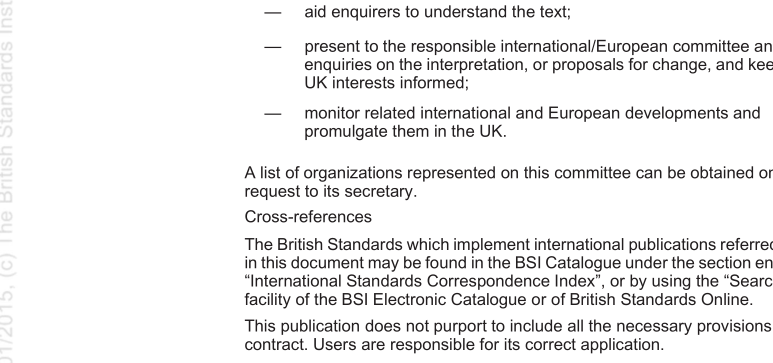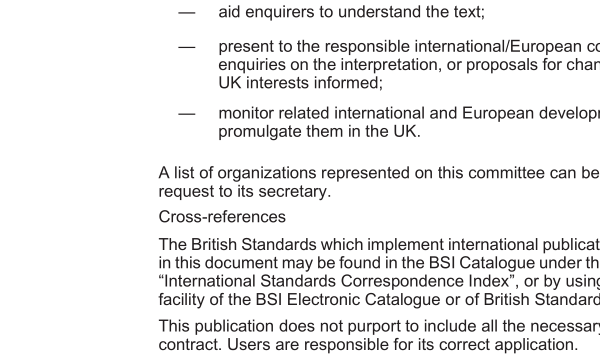PD ISO TR 16764:2003 pdf download – Lifts, escalators and passenger conveyors — Comparison of worldwide standards on electromagnetic interference/ electromagnetic compatibility.
1 Scope This Technical Report consists of a comparison of electromagnetic interference/electromagnetic compatibility (EMI/EMC) worldwide standards of interest to the lift industry. 2 Electromagnetic interference/electromagnetic compatibility standards 2.1 Background With the advent of radio broadcast transmission in the 1 920s, the interference from radio noise (i.e. electromagnetic noise) became a concern of engineers in Europe and North America and many technical papers were beginning to be published dealing with electromagnetic interference (EMI). Early studies showed that motor driven appliances, switches, automobile ignitions, electric traction and electrical power lines, among other sources, caused radio interference. 2.2 CISPR/IEC In 1 933 the International Special Committee on Radio Interference (CISPR, Comité International Spécial de Perturbations Radioélectriques) was formed as a result of a joint effort of the International Electrotechnical Commission (IEC) and the International Union of Broadcasting. The first meeting of CISPR was held in 1 934 to address limits of EMI and methods of measurement. Following World War II, the United States, Canada and Australia started to participate in CISPR. Subsequently countries from Asia and other parts of the world also started participating in CISPR. The emphasis initially was on getting agreement on measurement procedures and instrumentation for the protection of radio services with particular emphasis on radio broadcasting. The subject of acceptable performance limits was left to a later date. IEC/TC 65 was formed in the early 1 960s and was also concerned with EMC requirements. In 1 974, the IEC established a new technical committee (IEC/TC 77) to cover EMC subjects not generally dealt with by the CISPR, in particular, immunity characteristics of all kinds of equipment and emission phenomena below 9 kHz, the lower end of the radio frequency spectrum. The organization of these committees in the IEC is shown in Figure 2. In formal structure, the CISPR is a separate organization from the IEC. However it should be noted that the plenary is constituted of representation from various international organizations, as well as by the National Committees of the IEC. In the IEC council, only the National Committees are represented. Also, the publications of the CISPR are issued by the IEC, and the operational procedures are identical in most respects.
2.3.2 The China Technical Committee of Standardization of Radio Interference (CTCSRI) was established in 1 981 under the leadership of the China State Bureau of Technical and Quality Supervision. One of its tasks is to study the IEC/CISPR EMC/EMI standards and develop China’s own EMC/EMI standards. There are eight subcommittees from A to G and S which concern respectively test instrument, ISM equipment, mobile, radio receiver, household appliances and electric tools, office equipment, and radio and non-radio systems. In 1 993, GB/T1 3926 was published which is equivalent to IEC 60801 . Currently, there are more than forty EMC/EMI standards published covering limits, test methods and related aspects such as site requirements and personal hazards. There is a concerted effort in China to move towards those of the IEC/CISPR.
PD ISO TR 16764:2003 pdf download – Lifts, escalators and passenger conveyors — Comparison of worldwide standards on electromagnetic interference/ electromagnetic compatibility






